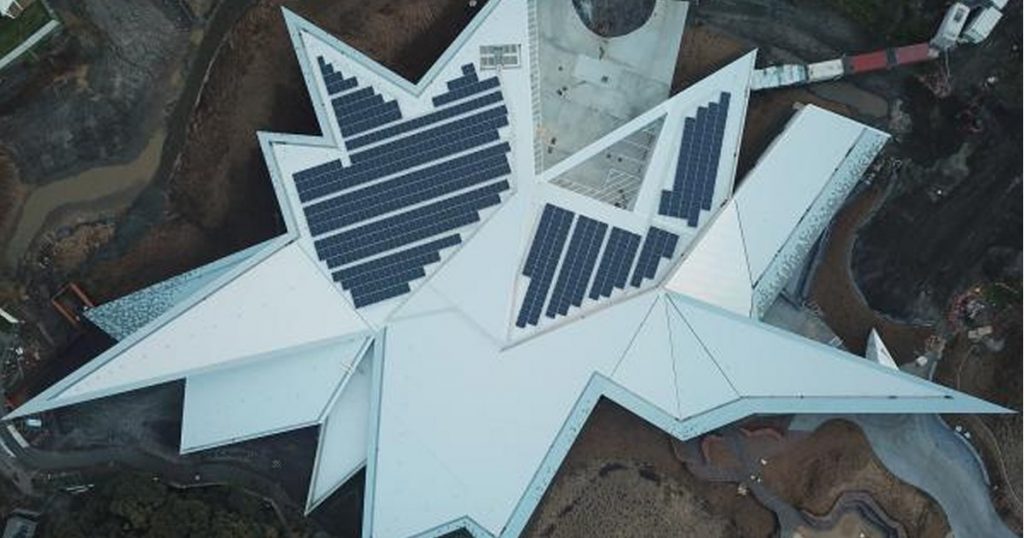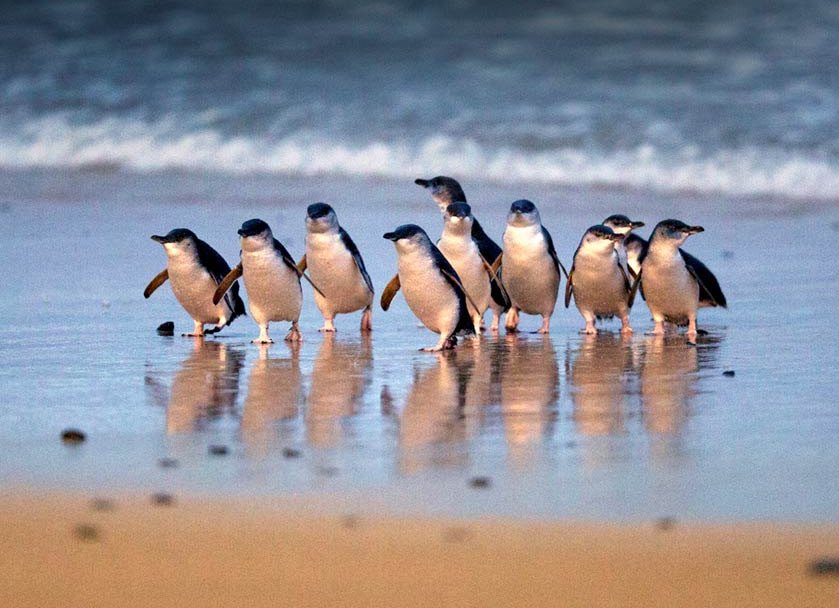
Image: Phillip Island Nature Parks
A new $58.2 million visitor centre on Victoria’s Phillip Island featuring a large-scale solar panel installation was officially opened last week by Premier Daniel Andrews and Minister for Environment, Energy and Climate Change Lily D’Ambrosio.
The 200kW system was installed by Gippsland Solar, which says 666 Trina Solar panels (so 300 watts each) and Fronius solar inverters were used for the project. A system of that size installed on Phillip Island should generate somewhere in the region of 272,500 kilowatt-hours of clean electricity a year.
There’s little further information published about the installation and it was curious the Centre’s solar power system didn’t rate a mention in the Victorian Government’s press release about the opening. A system of this size on such a unique rooftop and its environment-related benefits was certainly newsworthy.
Perhaps the omission was because at the same time Premier Andrews and Minister D’Ambrosio (who is also Minister for Solar Homes) were caught up in their own penguin-related parade, hundreds were rallying on the steps of State Parliament, protesting the impact of the botched Solar Homes solar power rebate – and bears and poking came to mind. Or maybe it was just an oversight.
Other sustainability-related features of the Centre that did get a mention include a water filtration system to recycle rainwater for non-potable use, increased roof and floor insulation and double-glazed windows. Building materials used included sustainably sourced Victorian Ash hardwood for the Centre’s laminated beams.
Penguins’ Plastics Plight
On opening day, Minister D’Ambrosio also announced single-use plastics throughout the Centre’s food outlets will be eliminated. The move recognises the threat posed to little penguins by plastics, that can mistake these for prey items. Plastics present a choking hazard and can remain in a penguin’s digestive system; leading to malnutrition or starvation. Plastics can also soak up other contaminants from aquatic environments such as lead and mercury.
In a study on Phillip Island, the contents of 67 short-tailed shearwater fledgling stomachs were analysed and found all of the birds had ingested plastic (average 7.6 pieces per bird), including microplastics.

Image: Phillip Island Nature Parks
Little penguins are the smallest of all penguin species, standing around 33cm tall and weighing around one kilogram. Phillip Island boasts Australia’s largest colony of little penguins and is an important breeding site. Another aspect of the visitor center redevelopment is the restoration of more than six hectares of penguin habitat on the site of the old visitor centre and coach parking areas built more than 30 years ago. This will create space for an additional 1,400 breeding penguins.
Trivia – the largest solar power installation on Phillip Island is at Newhaven College; a 243kW project (740 solar panels) installed in 2017; also by Gippsland Solar.

 RSS - Posts
RSS - Posts



Speak Your Mind